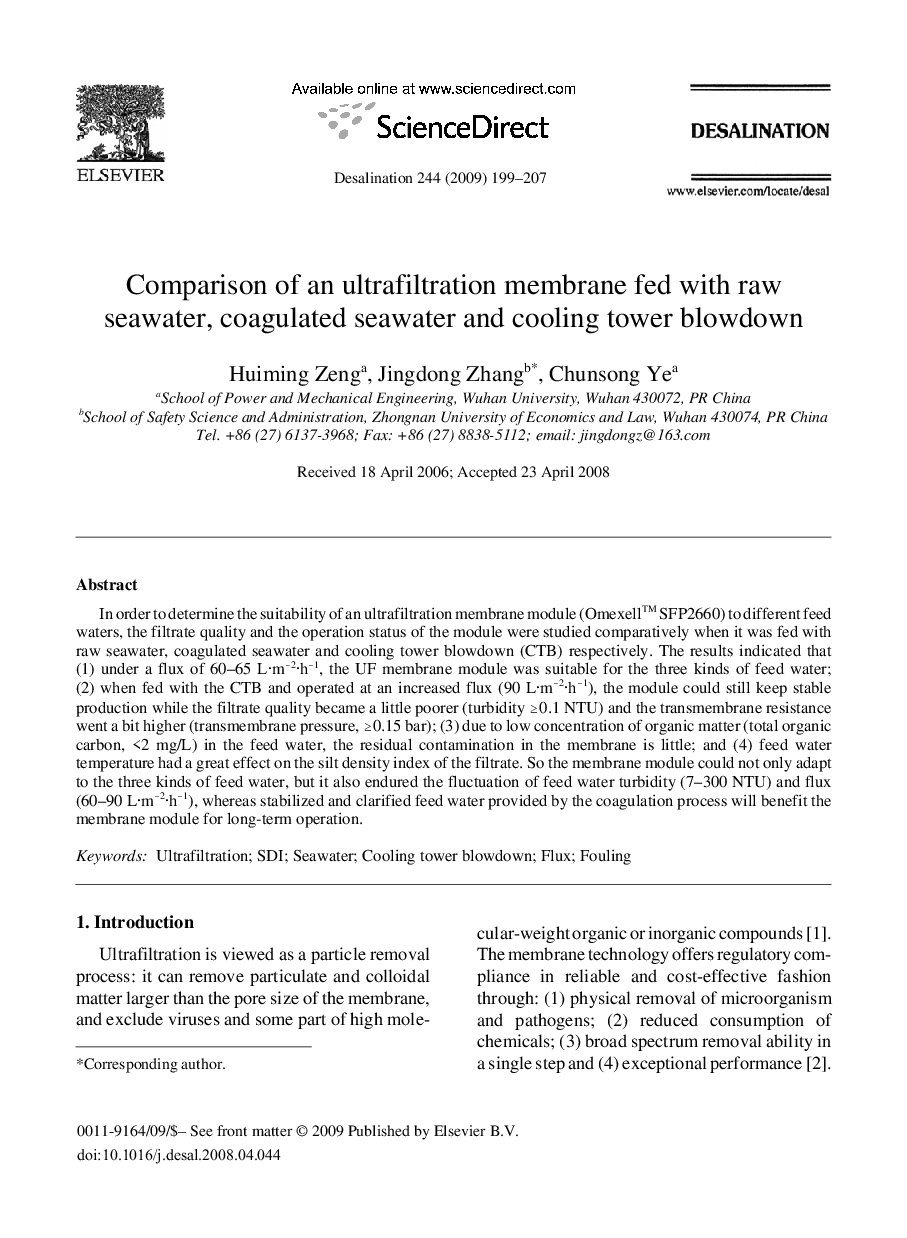| Article ID | Journal | Published Year | Pages | File Type |
|---|---|---|---|---|
| 626721 | Desalination | 2009 | 9 Pages |
Abstract
In order to determine the suitability of an ultrafiltration membrane module (Omexell⢠SFP2660) to different feed waters, the filtrate quality and the operation status of the module were studied comparatively when it was fed with raw seawater, coagulated seawater and cooling tower blowdown (CTB) respectively. The results indicated that (1) under a flux of 60-65 L·mâ2·hâ1, the UF membrane module was suitable for the three kinds of feed water; (2) when fed with the CTB and operated at an increased flux (90 L·mâ2·hâ1), the module could still keep stable production while the filtrate quality became a little poorer (turbidity â¥0.1 NTU) and the transmembrane resistance went a bit higher (transmembrane pressure, â¥0.15 bar); (3) due to low concentration of organic matter (total organic carbon, <2 mg/L) in the feed water, the residual contamination in the membrane is little; and (4) feed water temperature had a great effect on the silt density index of the filtrate. So the membrane module could not only adapt to the three kinds of feed water, but it also endured the fluctuation of feed water turbidity (7-300 NTU) and flux (60-90 L·mâ2·hâ1), whereas stabilized and clarified feed water provided by the coagulation process will benefit the membrane module for long-term operation.
Related Topics
Physical Sciences and Engineering
Chemical Engineering
Filtration and Separation
Authors
Huiming Zeng, Jingdong Zhang, Chunsong Ye,
